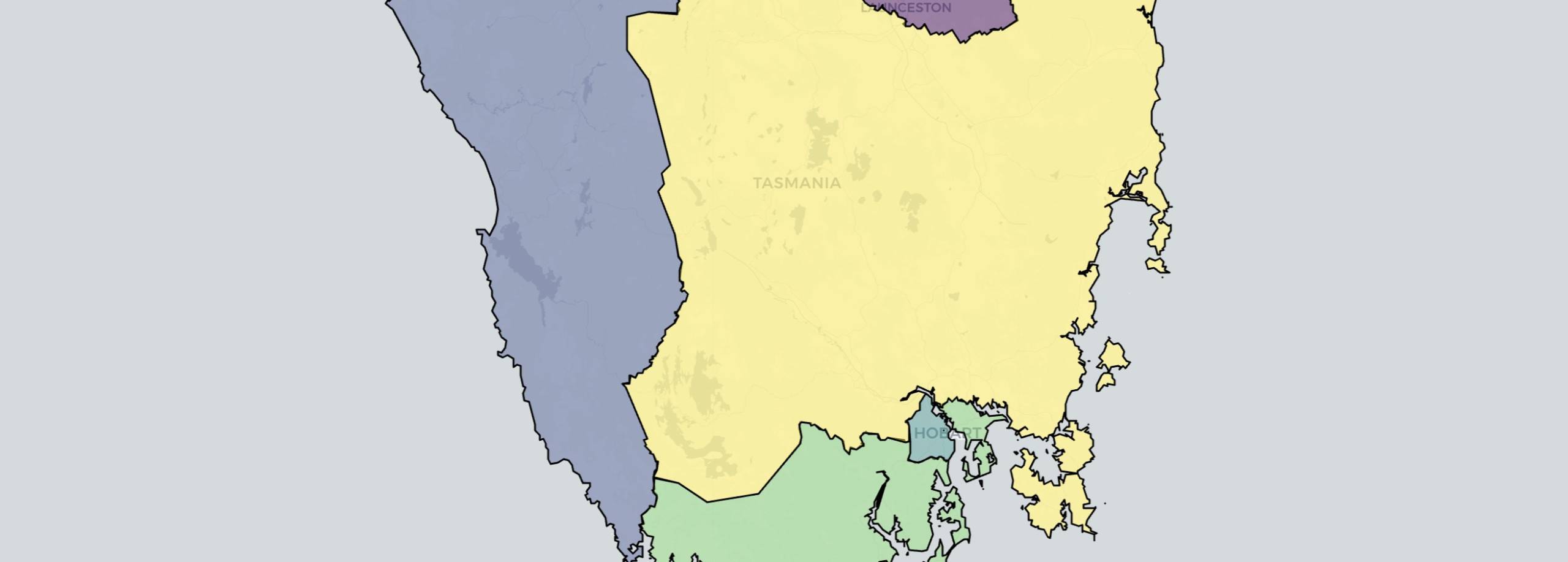So I don’t yet have any maps of the results to provide – the TEC’s website provides polling place information in a frustratingly vague format, without lat longs or even unique names for booths. I know I can get that data from somewhere, so rest assured I’ll be back with a big colourful map of the state once it’s available.
For now, I wanted to sum up what happened in yesterday’s election.
There are different stories depending on which part of Tasmania you look at. The north and south saw the election go in different directions.
In the three northern electorates, the Liberal vote went up, if not by very much. Likewise the Labor vote went down, but not by very much. The Greens experienced substantial swings in Braddon and Lyons and have currently lost a tiny bit of ground in Bass, but Braddon was off an extremely low base.
The northern electorates are the base of the Liberal majority, and the thing that makes it so hard for progressives to govern. They provide fifteen of the state’s seats, and nine of those seats will go Liberal.
For the Greens, they have their two strongholds in the south but they need Bass and Lyons in particular if they are to return to past strength.
The story looks very different in the south, although Clark in particular has special factors due to a number of strong independents and party defections.
Franklin saw a large 5.8% swing (on current figures) away from the Liberal Party, presumably in part due to the absence of former premier Will Hodgman. It is impossible for me to separate out this factor from any kind of general southern Tasmanian anti-Liberal swing. We just don’t have enough electorates to make that judgement.
The swing didn’t benefit Labor, but the Greens did solidify their position. But it won’t be enough to win any extra seats, and the Liberals had enough surplus votes in 2018 that a large swing against them won’t endanger either of their seats.
So the race ultimately comes down to Clark, as was expected. It is both the most interesting race but also the pivotal result. Just two seats will be enough for the Liberals to win a majority.
While the Liberal vote has dropped in Clark, the real collapse has been suffered by Labor, who look set to drop to just one seat in the state’s most progressive electorate, with a lot of voters choosing to vote for either the Greens or independents who appeal to centre-left voters.
Once I have the data to make some proper maps it will be interesting to look at where the independent vote is concentrated. A quick glance suggests that Johnston has indeed done a lot better in the north of the electorate, which has traditionally been the best area for Labor, while Hickey has done better further south.
Right now, with some but not all of the pre-poll and postal votes in, it looks like a second Liberal, either Simon Behrakis or Madeleine Ogilvie, will win the fourth seat, with Hickey trying to chase down Johnston for the final seat. But there’s enough danger for the Libs to keep watching this race, since the Liberals need that seat for their majority.
That’s it for now. I’ll return with some more geographic analysis once I track down the data, and I’ll be putting together a podcast tomorrow with Kevin Bonham.




Lyons is conservative small town but increasingly outer suburban too. Recent redistributions have moved it further south, in line with population growth, taking the outer hobart areas of bridgewater, old beach and around Richmond. Along with sorell and new Norfolk, these outer hobart suburban bits are prob close to half the electorate.
Comments are closed.